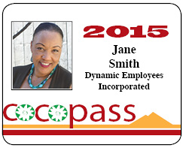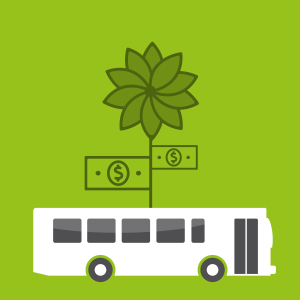Diablo Valley College (DVC) has provided quality education for over 60 years and is one of three publicly supported two-year community colleges in the Contra Costa Community College District. The larger of DVC’s two campuses is located off Interstate 680 in Pleasant Hill. The newer San Ramon Campus serves the south county in Dougherty Valley. Between its two campuses, DVC serves more than 22,000 students each semester. The challenge both face is parking for its students, faculty and staff. The Pleasant Hill campus has approximately 2,000 parking spaces. This is where County Connection comes in.
County Connection has a long history of providing service to DVC. We consider DVC to be one of our most valuable partners. San Ramon Campus is accessible using County Connection route 35. In late 2010, a new County Connection Transit Center was opened at DVC Pleasant Hill. This project, which was funded in large part through a federal transportation earmark garnered by then Congresswoman Ellen Tauscher and supported by local Measure J funds, is vital to the modernization of the DVC campus. It allows us to safely and conveniently serve more people with public transit at DVC’s largest campus.
Currently, over 1,000 students and faculty use County Connection to access DVC Pleasant Hill on a daily basis. County Connection riders can use routes 9, 18, 20, or 28 to access DVC. All of these routes directly serve a BART station. These connections to BART allow students and faculty to use public transit regionally to access DVC. This is important as many DVC students come from outside central Contra Costa County. Of course people living locally can use County Connection quite easily to get to DVC too. Routes 314, 316, and 320 serve the Pleasant Hill campus on weekends.
Advocates for More Transit
Last year, DVC students attended a meeting of the County Connection Operations & Scheduling (O&S) Committee to talk about over-crowding on Route 20 between the Concord BART station and DVC. They came prepared, showing the committee photographs of the overcrowding and advocated for more service. As a result of that, the O&S Committee directed County Connection staff to add buses to Route 20 to accommodate the demand for service to DVC. These added buses – as well as the others on Route 20 – are often full.
As DVC continues to grow in terms of student population, public transit service to and from DVC will only become more vital. To prepare, County Connection and DVC are in discussions about the creation of a DVC student/faculty fare pass for County Connection service. Also, we are looking at ways to enhance services to DVC in the future.
County Connection also plays another important role as a key partner with DVC when it comes to emergency response and/or evacuation. A number of DVC students have physical disabilities that require the use of County Connection LINK service to access DVC. Should a need ever arise to evacuate DVC during an emergency, County Connection LINK staff and DVC staff have processes in place to ensure the safe and timely evacuation of LINK users from DVC.
Our service to DVC also benefits the residents of Pleasant Hill that live near DVC. As the DVC parking lots fill, students and faculty that use County Connection to access DVC are not parking in the adjacent neighborhoods, which reduces potential traffic in the area and also saves scarce on-street parking for those nearby residents.
All of us at County Connection take pride in the role we play in making DVC a very valuable place of learning for the future leaders and producers of our community.
Our Valuable Partnership With DVC
Diablo Valley College (DVC) has provided quality education for over 60 years and is one of three publicly supported two-year community colleges in the Contra Costa Community College District. The larger of DVC’s two campuses is located off Interstate 680 in Pleasant Hill. The newer San Ramon Campus serves the south county in Dougherty Valley. Between its two campuses, DVC serves more than 22,000 students each semester. The challenge both face is parking for its students, faculty and staff. The Pleasant Hill campus has approximately 2,000 parking spaces. This is where County Connection comes in.
County Connection has a long history of providing service to DVC. We consider DVC to be one of our most valuable partners. San Ramon Campus is accessible using County Connection route 35. In late 2010, a new County Connection Transit Center was opened at DVC Pleasant Hill. This project, which was funded in large part through a federal transportation earmark garnered by then Congresswoman Ellen Tauscher and supported by local Measure J funds, is vital to the modernization of the DVC campus. It allows us to safely and conveniently serve more people with public transit at DVC’s largest campus.
Currently, over 1,000 students and faculty use County Connection to access DVC Pleasant Hill on a daily basis. County Connection riders can use routes 9, 18, 20, or 28 to access DVC. All of these routes directly serve a BART station. These connections to BART allow students and faculty to use public transit regionally to access DVC. This is important as many DVC students come from outside central Contra Costa County. Of course people living locally can use County Connection quite easily to get to DVC too. Routes 314, 316, and 320 serve the Pleasant Hill campus on weekends.
Advocates for More Transit
Last year, DVC students attended a meeting of the County Connection Operations & Scheduling (O&S) Committee to talk about over-crowding on Route 20 between the Concord BART station and DVC. They came prepared, showing the committee photographs of the overcrowding and advocated for more service. As a result of that, the O&S Committee directed County Connection staff to add buses to Route 20 to accommodate the demand for service to DVC. These added buses – as well as the others on Route 20 – are often full.
As DVC continues to grow in terms of student population, public transit service to and from DVC will only become more vital. To prepare, County Connection and DVC are in discussions about the creation of a DVC student/faculty fare pass for County Connection service. Also, we are looking at ways to enhance services to DVC in the future.
County Connection also plays another important role as a key partner with DVC when it comes to emergency response and/or evacuation. A number of DVC students have physical disabilities that require the use of County Connection LINK service to access DVC. Should a need ever arise to evacuate DVC during an emergency, County Connection LINK staff and DVC staff have processes in place to ensure the safe and timely evacuation of LINK users from DVC.
Our service to DVC also benefits the residents of Pleasant Hill that live near DVC. As the DVC parking lots fill, students and faculty that use County Connection to access DVC are not parking in the adjacent neighborhoods, which reduces potential traffic in the area and also saves scarce on-street parking for those nearby residents.
All of us at County Connection take pride in the role we play in making DVC a very valuable place of learning for the future leaders and producers of our community.




